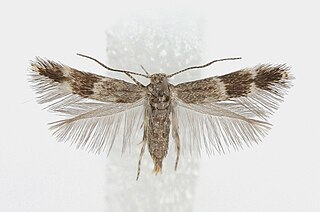
Elachista exactella is a moth of the family Elachistidae. It is found from the Iberian Peninsula, east to Romania, north through France and the Benelux to Fennoscandia, east through central Europe to the Baltic region and northern Russia.

Elachista tengstromi is a moth of the family Elachistidae found in Europe and Japan. The moth was formerly considered to be a form of Elachista regificella.

Elachista eleochariella is a moth of the family Elachistidae found in Europe and North America.

Ectoedemia decentella is a moth of the family Nepticulidae found in Europe. It was described in 1855, by the German entomologist and physician, Gottlieb August Wilhelm Herrich-Schäffer.

Elachista is a genus of gelechioid moths described by Georg Friedrich Treitschke in 1833. It is the type genus of the grass-miner moth family (Elachistidae). This family is sometimes circumscribed very loosely, including for example the Agonoxenidae and Ethmiidae which seem to be quite distinct among the Gelechioidea, as well as other lineages which are widely held to be closer to Oecophora than to Elachista and are thus placed in the concealer moth family Oecophoridae here.

Leucoptera lustratella is a moth in the Lyonetiidae family. It is found from Fennoscandia to the Pyrenees and Italy and from France to Belarus and Romania.
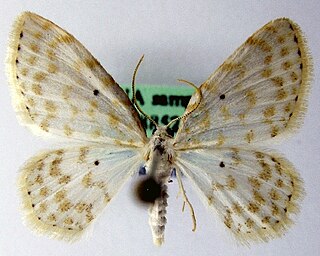
Asthena anseraria is a moth of the family Geometridae. It is known from most of Europe, east to Korea.
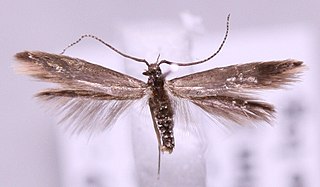
Coleophora fuscocuprella is a moth of the family Coleophoridae. It is found from Fennoscandia to the Pyrenees, Italy, Albania and Romania and from Ireland to Russia.

Elachista pigerella is a moth of the family Elachistidae. It is found from Germany to the Iberian Peninsula, Sardinia and Italy. It is also found in Russia and on Cyprus.
Elachista nitidulella is a moth of the family Elachistidae that can be found from Germany to the Alps and from France to Romania. It is also found in Russia.

Elachista geminatella is a moth of the family Elachistidae found in Europe.

Elachista fulgens is a moth of the family Elachistidae. It is found in Italy, Germany, the Netherlands and Japan.
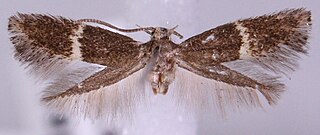
Elachista fasciola is a moth of the family Elachistidae. It is found from Europe east through Russia to Japan.

Elachista dispilella is a moth of the family Elachistidae. It is found from Fennoscandia to the Pyrenees and Italy and from France to Romania.

Elachista diederichsiella is a moth of the family Elachistidae. It is found from Fennoscandia and northern Russia to the Pyrenees, Alps and Carpathian Mountains, and from France to central Russia. It is also found in North America.
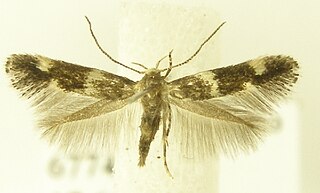
Elachista compsa is a moth of the family Elachistidae. It is found from Fennoscandia and the Baltic region to Germany, Poland to Italy.
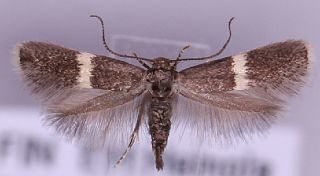
Elachista cingillella is a moth of the family Elachistidae found in Europe.
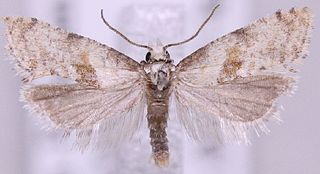
Cochylidia heydeniana, the blue-fleabane conch, is a moth of the family Tortricidae. It was described by Gottlieb August Wilhelm Herrich-Schäffer in 1851. It is found from most of Europe to China (Xinjiang), Mongolia, Korea, Russia and Japan. The habitat consists of dry pastures, wasteland and sand dunes.

















